Mayor Dwight Jones has made his ceremonial first pitch for a baseball stadium in Shockoe Bottom, and local developers have more than $100 million in nearby projects on deck.
Jones on Monday unveiled plans for a more than $200 million ballpark village development slated to include 750 apartments, a hotel, a Kroger grocery store and a slavery museum site, all centered around a new baseball stadium for the Richmond Flying Squirrels.
“All of these economic projects have been secured with letters of intent,” Jones said of the nine-figure combined private and public investment. “This is not wishful thinking.”
The announcement, which came at a news conference at the Weiman’s Bakery property at Grace and 17th streets, puts an end to the long-running debate over where to build a new baseball stadium – at least as far as the mayor and the Squirrels are concerned.
Jones’s announcement also made public for the first time the local developers that are ready to play ball downtown.
Home plate in the new stadium would sit on what is now a gravel lot at the former Weiman’s Bakery, a half-acre property considered a lynchpin for a ballpark development when developers David White and Louis Salomonsky bought it this spring.
White said he originally planned to build a hotel at the site but will end up selling the half-acre plot to make way for stadium construction.
“It turned out that the ballpark plans were farther along than a lot of people anticipated,” White said about the Weiman’s property purchase. “We certainly didn’t want to stand in the way.”
White and his son Brian have signed on to build 750 apartment units in the ballpark area. Plans call for two complexes adjacent to the stadium totaling 200 units to the east and south, and another 550 apartments north of Broad Street. White said that anticipated construction costs top $70 million and that he hopes to deliver the first units in April 2016.
McFarlane Partners, headed by Charles McFarlane, will develop a roughly 120-room hotel at the north edge of Broad Street at the corner of 17th Street. The company is a franchisee of the Marriott, Hampton and Hyatt brands. McFarlane will be applying for a franchise agreement with Hyatt for the project and estimated a total investment of between $20 million and $24 million.
A 65,000-square-foot Kroger supermarket is slated for the hotel’s ground floor.
Fenton Childers, Kroger’s head of real estate for Virginia, estimated the grocer would pay about $12 million for the new store.
“It’s a little unusual for us … certainly we are not in many high-density urban settings like this,” he said, adding that Kroger has eyed a Shockoe Bottom location for several years.
Speaking Monday from a podium where the new stadium’s home plate would eventually sit, Jones said the Shockoe Bottom location presents the best return on a new ballpark investment, which would cost the city almost $80 million for ballpark construction, infrastructure improvements, land acquisition and a contribution for the Slavery and Freedom Heritage Site.
Jones said the Shockoe Bottom complex, which stretches from a parking deck near Clay Street to a revamped 17th Street Farmers Market on the northern end of Main Street, would create about $10 million in revenue for the city each year.
The other alternative that was considered – a new stadium on Boulevard – would create annual revenue between $5 million and $6 million, Jones said.
“Clearly this is the best plan for the taxpayers,” he said. “We have made the decision, and we move forward from this place.”
Jones also introduced plans for the Slavery and Freedom Heritage Site, promising $30 million will be raised for a museum at the former Lumpkin’s Slave Jail that will recognize Shockoe Bottom’s history as a hub of the slave trade in the 19th century. Capital One will have some involvement in that funding, although the mayor didn’t expound on that arrangement.
The plan to build the ballpark on and near former slave trade sites brought a group of about 70 protesters to the mayor’s press conference. They chanted “No stadium on sacred ground” during the event.
Phil Wilayto, one of the protest’s organizers, offered an alternative development proposal focused on the neighborhood’s history, saying that a historic district with parks and a larger learning center and museum would be a bigger draw for tourists outside of Richmond. He called the Slavery and Freedom Heritage Site a “token museum.”
“The majority of African American people in the U.S. can trace some heritage to Shockoe Bottom,” he said. “It is morally inappropriate to play baseball on a site of a massive atrocity.”
The long-anticipated announcement comes almost a month after a trio of ordinances that will allow the city to take ownership of the Diamond on Boulevard began moving through the city’s planning committee.
The city council later this month will likely approve ordinances allowing the city to take nine-acre site the Diamond sits on from the Richmond Metropolitan Authority. The RMA was granted the stadium’s land on North Boulevard by the city in 1984 with an agreement that the property would revert to the city if a new ballpark were constructed.
The transfer will give the city control of about 55 acres between North Boulevard, Heritage Road and Robin Hood Road. The city is moving out of vehicle maintenance and storage facilities near the Diamond, as the site has been tabbed for a potential mixed-use development if a ballpark were built in place of the Diamond or elsewhere in the city.
Mayor Dwight Jones has made his ceremonial first pitch for a baseball stadium in Shockoe Bottom, and local developers have more than $100 million in nearby projects on deck.
Jones on Monday unveiled plans for a more than $200 million ballpark village development slated to include 750 apartments, a hotel, a Kroger grocery store and a slavery museum site, all centered around a new baseball stadium for the Richmond Flying Squirrels.
“All of these economic projects have been secured with letters of intent,” Jones said of the nine-figure combined private and public investment. “This is not wishful thinking.”
The announcement, which came at a news conference at the Weiman’s Bakery property at Grace and 17th streets, puts an end to the long-running debate over where to build a new baseball stadium – at least as far as the mayor and the Squirrels are concerned.
Jones’s announcement also made public for the first time the local developers that are ready to play ball downtown.
Home plate in the new stadium would sit on what is now a gravel lot at the former Weiman’s Bakery, a half-acre property considered a lynchpin for a ballpark development when developers David White and Louis Salomonsky bought it this spring.
White said he originally planned to build a hotel at the site but will end up selling the half-acre plot to make way for stadium construction.
“It turned out that the ballpark plans were farther along than a lot of people anticipated,” White said about the Weiman’s property purchase. “We certainly didn’t want to stand in the way.”
White and his son Brian have signed on to build 750 apartment units in the ballpark area. Plans call for two complexes adjacent to the stadium totaling 200 units to the east and south, and another 550 apartments north of Broad Street. White said that anticipated construction costs top $70 million and that he hopes to deliver the first units in April 2016.
McFarlane Partners, headed by Charles McFarlane, will develop a roughly 120-room hotel at the north edge of Broad Street at the corner of 17th Street. The company is a franchisee of the Marriott, Hampton and Hyatt brands. McFarlane will be applying for a franchise agreement with Hyatt for the project and estimated a total investment of between $20 million and $24 million.
A 65,000-square-foot Kroger supermarket is slated for the hotel’s ground floor.
Fenton Childers, Kroger’s head of real estate for Virginia, estimated the grocer would pay about $12 million for the new store.
“It’s a little unusual for us … certainly we are not in many high-density urban settings like this,” he said, adding that Kroger has eyed a Shockoe Bottom location for several years.
Speaking Monday from a podium where the new stadium’s home plate would eventually sit, Jones said the Shockoe Bottom location presents the best return on a new ballpark investment, which would cost the city almost $80 million for ballpark construction, infrastructure improvements, land acquisition and a contribution for the Slavery and Freedom Heritage Site.
Jones said the Shockoe Bottom complex, which stretches from a parking deck near Clay Street to a revamped 17th Street Farmers Market on the northern end of Main Street, would create about $10 million in revenue for the city each year.
The other alternative that was considered – a new stadium on Boulevard – would create annual revenue between $5 million and $6 million, Jones said.
“Clearly this is the best plan for the taxpayers,” he said. “We have made the decision, and we move forward from this place.”
Jones also introduced plans for the Slavery and Freedom Heritage Site, promising $30 million will be raised for a museum at the former Lumpkin’s Slave Jail that will recognize Shockoe Bottom’s history as a hub of the slave trade in the 19th century. Capital One will have some involvement in that funding, although the mayor didn’t expound on that arrangement.
The plan to build the ballpark on and near former slave trade sites brought a group of about 70 protesters to the mayor’s press conference. They chanted “No stadium on sacred ground” during the event.
Phil Wilayto, one of the protest’s organizers, offered an alternative development proposal focused on the neighborhood’s history, saying that a historic district with parks and a larger learning center and museum would be a bigger draw for tourists outside of Richmond. He called the Slavery and Freedom Heritage Site a “token museum.”
“The majority of African American people in the U.S. can trace some heritage to Shockoe Bottom,” he said. “It is morally inappropriate to play baseball on a site of a massive atrocity.”
The long-anticipated announcement comes almost a month after a trio of ordinances that will allow the city to take ownership of the Diamond on Boulevard began moving through the city’s planning committee.
The city council later this month will likely approve ordinances allowing the city to take nine-acre site the Diamond sits on from the Richmond Metropolitan Authority. The RMA was granted the stadium’s land on North Boulevard by the city in 1984 with an agreement that the property would revert to the city if a new ballpark were constructed.
The transfer will give the city control of about 55 acres between North Boulevard, Heritage Road and Robin Hood Road. The city is moving out of vehicle maintenance and storage facilities near the Diamond, as the site has been tabbed for a potential mixed-use development if a ballpark were built in place of the Diamond or elsewhere in the city.

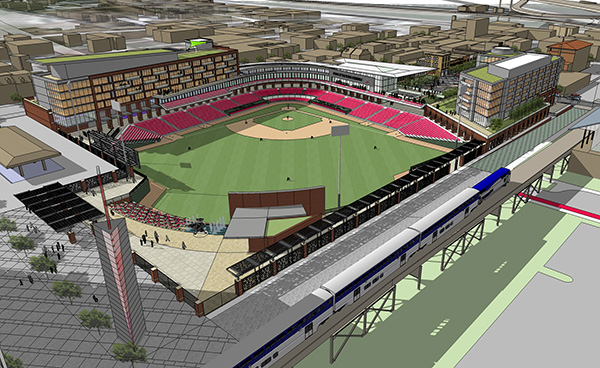
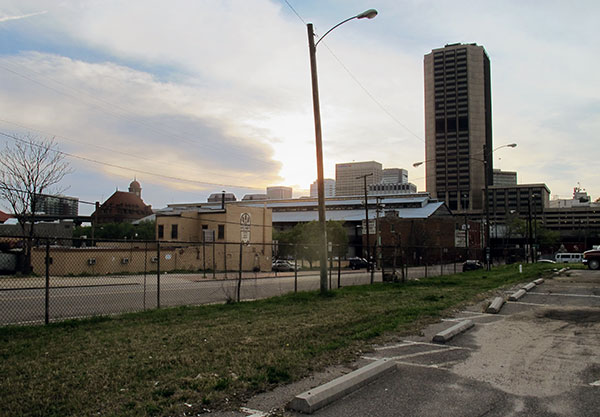
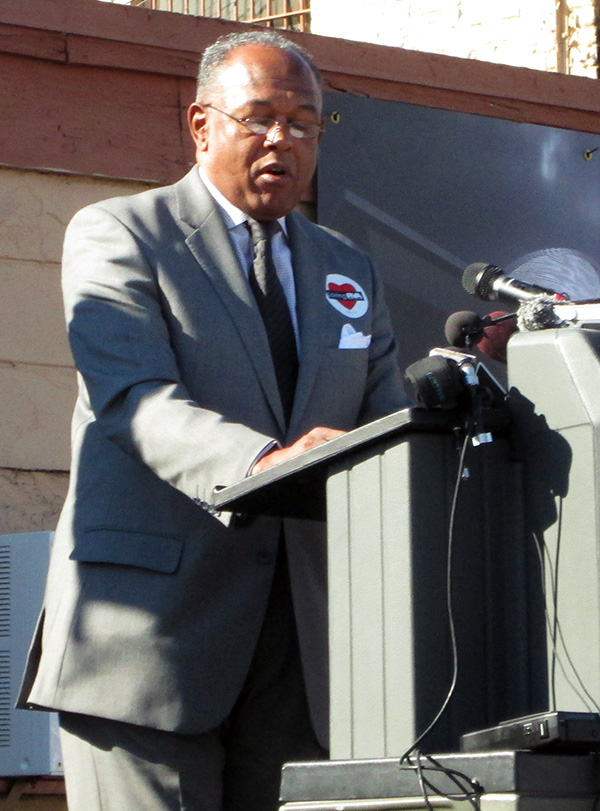
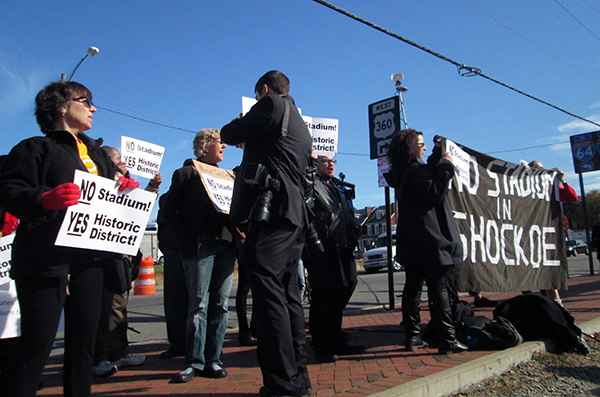
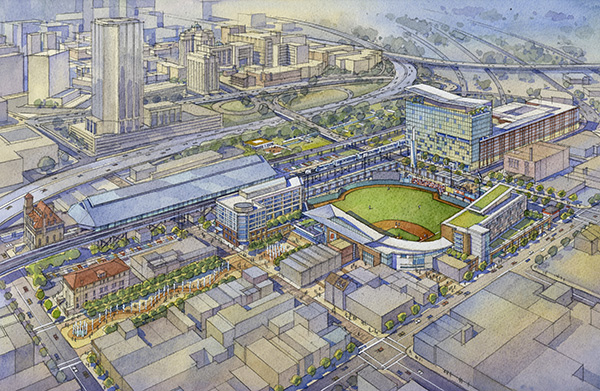


1. As currently drawn, the fans and batter will be facing into the afternoon sun. Most other baseball stadiums face east.
2. Would the hotel, grocery, and museum be built if the stadium were not built?
3. Best place for baseball would be SportsQuest Park now owned by Chesterfield County. Oops, I forgot that no Chesterfield official will return a call from Richmond.
Perhaps this entire exercise is driven by the possible development on the Boulevard. Shockoe Bottom may just be an afterthought. The ballpark must move to make way for everything else.
Actually as shown it would face north. Broad Street does not run east/west at this point. It actually runs on a northwest to southeast diagonal. As for Chesterfield being the best location that is not in anyway true. The majority of their tickets come from the City, Henrico, and Hanover. Why would you move something all the way down 288 where it would take all of those people much longer to get to it? I hope they do redevelop the diamond area into more shopping opportunites for residents. It’ll be good to keep some of the sales tax revenue in… Read more »
Mayor Jones stated ” build it and they will come.” I say to the Mayor, don’t count on it ! Survey after survey, over the past 10 years has concluded that the fans prefer the Boulevard. The Richmond Flying Squirrels need to do their homework. They can start with Autozone Park in Memphis,Tn., which opened in 2000, in downtown Memphis, with apartments included. After a terrific first year for the AAA Memphis Redbirds attendance dropped seven or eight years in a row. The project is now in financial trouble and the City of Memphis is trying to figure out what… Read more »
Recommend that all related parties (city, developers, bankers and private investors) look closely at Greenviile SC, Winston-Salem NC and Greensboro NC as they all have executed this plan. A lot of lessons learned in each case by all parties, yet, in my opinion Greenville SC had best model.
I would like to see a more inclusive development that would be available throughout the year for more activities like: ice skating, mini rugby, mini football and more. Let’s try to make this a destination throughout the year for a wide spectrum of events and people.
Any development in the bottom is good development. Look at it now!! Chain link fences, run down buildings, and gravel parking lots. Its one of Richmond’s many eyesores. I know first hand that the residents of Church Hill need a grocery store because I’ve lived there and still own property there. Scott hit the hammer on the head. Like George Ross’ Echo Harbor, someone is always going to oppose it. Speaking of which, the people opposing Echo: A public boat landing and promenade, high end condos, dining, pools…You should go down there at night and see what it’s like now.… Read more »
Awesome point by Brian, G-Braves (old R-Braves) also having issues. Check out this article since the Mayor and others keep saying Memphis is a model. Yep model for failure.
http://markets.financialcontent.com/stocks/news/read/25652637/Memphis_Redbirds_Baseball_Foundation_Announces_Strategic_Agreement_To_Rescue_Memphis_Redbirds_and_AutoZone_Park
Putting a new ballpark on the Boulevard is a non-starter. Nothing will gel there, the area isn’t the least bit friendly. Have you been up and down that part of the Boulevard? You have that wonderful bus depot. Oh, then there is that wonderfully, poorly lit bridge to get over the tracks. Then on the east-side of the street, you have an extremely long brick facade belonging to Bow Tie cinemas. Anyone who thinks a Boulevard ball park is a good idea is not facing reality. The Shockoe proposal has the critical mass required to make it happen. And what… Read more »